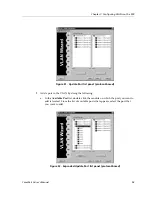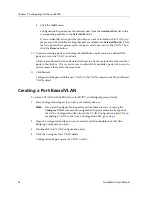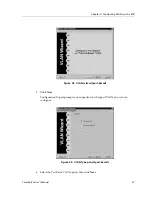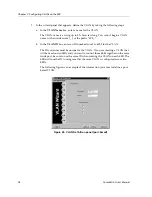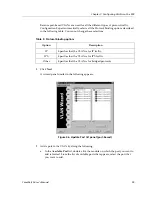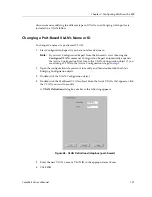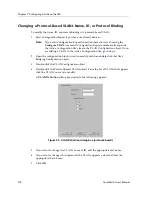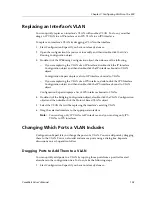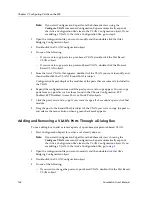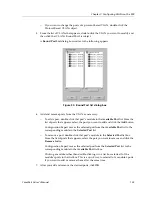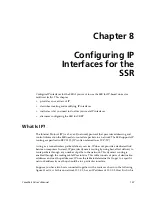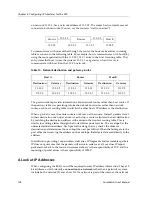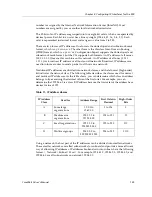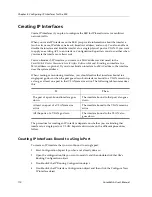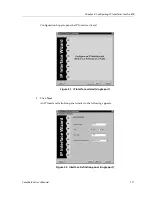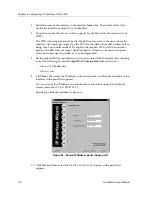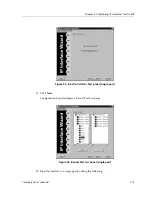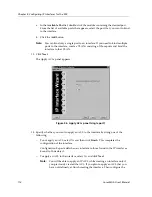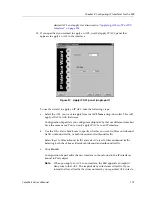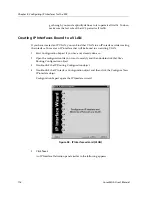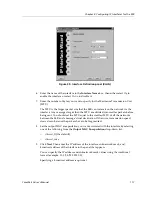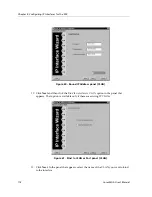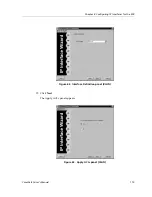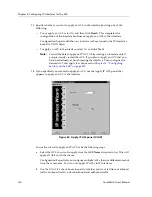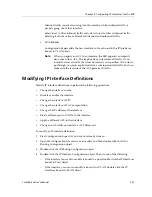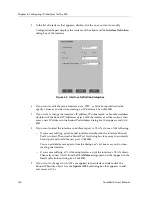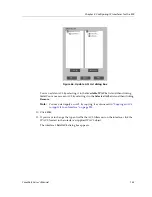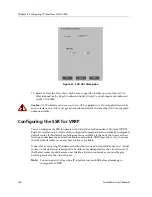
CoreWatch User’s Manual
109
Chapter 8: Configuring IP Interfaces for the SSR
number is assigned by the Internet Network Information Center (InterNIC). Host
numbers are assigned by you or another local network administrator.
The 32-bits of an IP address are grouped into four eight-bit octets, which are separated by
decimal points. Each bit in an octet has a binary weight (128, 64, 32, 16, 8, 4, 2, 1). Each
octet is represented in decimal format and ranges in value from 0 to 255.
There are two forms of IP addresses. One form is the dotted-quad and subnetwork mask
format, which is x.y.z.w n.n.n.x. The other form is the Classless Inter-Domain Routing
(CIDR) format, which is x.y.z.w/xx. Configuration Expert supports the dotted-quad and
subnetwork mask format, but the CLI supports both formats. An IP address of all zeroes
(0.0.0.0 0.0.0.0) means this machine on this network. An IP address of all ones (1.1.1.1
1.1.1.1) is a broadcast IP address or all hosts on all networks. Broadcast IP addresses are
used to inform a router to send a packet to all hosts on a network.
Traditional IP addresses are divided into network classes, and the left-most (high-order)
bit indicates the network class. The following table describes the classes used for unicast
and multicast IP addresses. As the table shows, you can determine which class an address
belongs to by examining the decimal value of the first octet. For example, you can
determine that 129.84.6.0 is a class B IP address because the first octet of the address has a
decimal value of 129.
Using a netmask, the host part of the IP addresses can be divided into smaller networks.
These smaller networks are called subnetworks (or subnets) and provide a more efficient
way of allocating IP addresses. IP addresses broken down into subnets have the following
format: | Network | Subnet | Host |. For example, 129.84.1.0, 129.84.2.0, 129.84.3.0, and
129.84.4.0 are all subnetworks on network 129.84.0.0.
Table 11. IP address classes
IP Address
Class
Used for
Address Range
First Octet in
Decimal
High-Order
Bits
A
Some large
organizations
1.0.0.0 to
126.0.0.0
1 to 126
0
B
Medium-size
organizations
128.1.0.0 to
191.254.0.0
128 to 191
10
C
Small organizations
192.0.1.0 to
223.255.254.0
192 to 223
110
D
Multicast groups
224.0.0.0 to
239.255.255.255
224 to 239
1110
Summary of Contents for CoreWatch
Page 1: ...CoreWatch User s Manual 9032564 04...
Page 2: ...Notice 2 CoreWatch User s Manual...
Page 20: ...Preface 20 CoreWatch User s Manual...
Page 64: ...Chapter 5 Changing System Settings 64 CoreWatch User s Manual...
Page 86: ...Chapter 6 Configuring SSR Bridging 86 CoreWatch User s Manual...
Page 106: ...Chapter 7 Configuring VLANs on the SSR 106 CoreWatch User s Manual...
Page 206: ...Chapter 12 Configuring QoS on the SSR 206 CoreWatch User s Manual...
Page 246: ...Chapter 13 Configuring Security on the SSR 246 CoreWatch User s Manual...
Page 363: ...CoreWatch User s Manual 363 Chapter 16 Configuring Routing Policies on the SSR 9 Click OK...
Page 364: ...Chapter 16 Configuring Routing Policies on the SSR 364 CoreWatch User s Manual...
Page 370: ...Chapter 17 Checking System Status 370 CoreWatch User s Manual...
Page 390: ...Chapter 18 Monitoring Real Time Performance 390 CoreWatch User s Manual...
Page 396: ...Chapter 19 Checking the Status of Bridge Tables 396 CoreWatch User s Manual...
Page 430: ...Chapter 20 Checking the Status of Routing Tables 430 CoreWatch User s Manual...
Page 442: ...Chapter 22 Obtaining Reports 442 CoreWatch User s Manual...
Page 456: ...Appendix B CoreWatch Menus 456 CoreWatch User s Manual...

